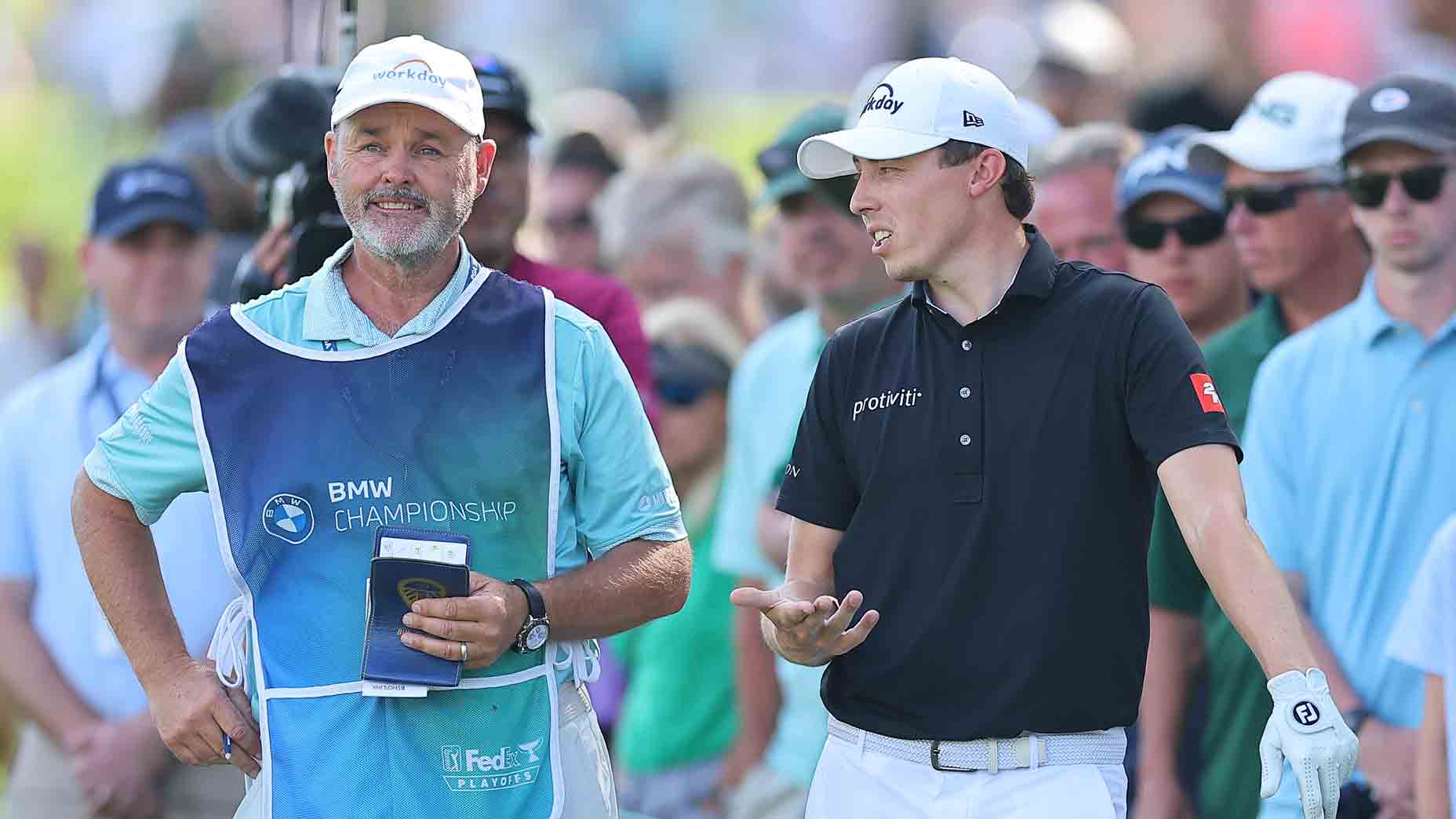Why Rory McIlroy believes he has an advantage at unfamiliar Wilmington Country Club

Wilmington Country Club will host a PGA Tour event for the first time this week.
Getty Images
WILMINGTON, Del. — While preference among PGA Tour host courses inevitably varies from player to player, Rory McIlroy seems to feel at home during his first visit to Wilmington Country Club.
“It’s a golf course that’s sort of is a little more up my alley compared to say last week in Memphis,” McIlroy said Wednesday after his pro-am round. “A lot more drivers off the tee, a lot of room off the tee, a lot more, I guess, scope to hit driver. Length is an advantage here, where in Memphis it’s not really.”
At, 7,534 yards, the South Course at Wilmington Country Club, host of this week’s BMW Championship, is nearly 300 yards longer than last week’s venue, TPC Southwind in Memphis. The greens average about double the size, and the Kentucky bluegrass/fescue rough is more than an inch longer. Compared to Southwind and East Lake Golf Club, host of next week’s Tour Championship, McIlroy said his length will be much more of an advantage.
“These sort of big northeast-style golf courses, they’re great venues to play tournaments on,” he said. “They’re the sort of golf courses that I typically do well on.”
Like many in the field, this is the first time McIlroy has seen Wilmington Country Club. This week is the first tour event played in the state of Delaware, and McIlroy wasn’t the only once noticing the length.
“This is a big-boy golf course, 7,500 yards. All three of the par-5s are basically not reachable,” last week’s champion, Will Zalatoris, said Wednesday. “If I were to design a golf course, this is probably how I would design it for me. So I’m very excited.”
Xander Schauffele told reporters the length and style of the course actually makes it easier to learn, especially for so many players seeing it for the first time, compared to a more quirky course like Harbor Town, which is more than 300 yards shorter.
“There just isn’t much to it. I know that may sound bad, but it’s really long, you don’t want to hit it in the rough, and every putt you have is almost downhill,” Schauffele said. “It’s hard to make a 650-yard par-5 ‘special.’ It’s just really long. It would almost be impossible if you made a 650-yard hole with a dogleg and water and a raised green and run-offs.
“It wouldn’t be my favorite course to play blind, but you could definitely do it.”
While Schauffele saw the course’s style as an advantage in playing for the first time, Patrick Cantlay, the event’s defending champion from Caves Valley, a course which several players compared to the South Course, seemed to be growing tired of the bomber’s paradises.
“I think it’s also strange to me that we play so many golf courses that all they do is add length to the golf courses,” Cantlay said Tuesday. “It’s so surprising to me that the golf courses that none of the guys who hit it far, they don’t go to Hilton Head, they don’t go to Colonial, they don’t go to the short, small, dogleggy tree-lined golf courses.”
Cantlay stopped short of calling the course a U.S. Open setup, but went on to say the South Course doesn’t require a lot of thinking.
“It’s just how far can you hit it and grab your driver on every hole and hit it as high and hit it as far as you possibly can,” he said. “I’m so surprised that [the Tour hasn’t] figured it out, and it just seems like we’re getting more and more of the same bomb-it-as-far-as-you-can golf courses week after week.”
Cantlay beat Bryson DeChambeau at the 2021 BMW Championship after they were tied at 27 under through 72 holes. DeChambeau overpowered Caves Valley that week, averaging more than 340 yards off the tee.
While most pros were hesitant to guess a winning score this year, Justin Thomas said Wilmington would be more challenging than Caves Valley, but still could see some lower scoring. He also noted how this course is also different from the other two playoff host sites because of the different grasses around the greens.
“The rough is quite a bit different to chip out of,” Thomas said. “Last week you had to pay a lot of attention to the grain and where you were landing it, if the ball was landing into the grain it was going to pop straight up or if it was downgrain it was going to take off, versus now it’s kind of what you see is what you get with the slope.”











